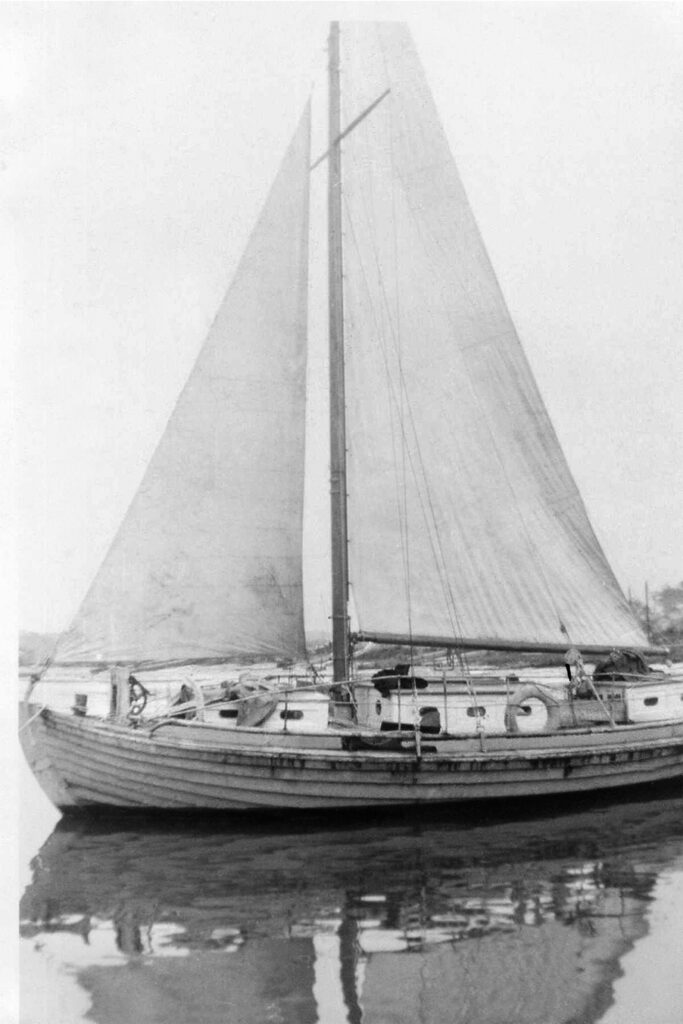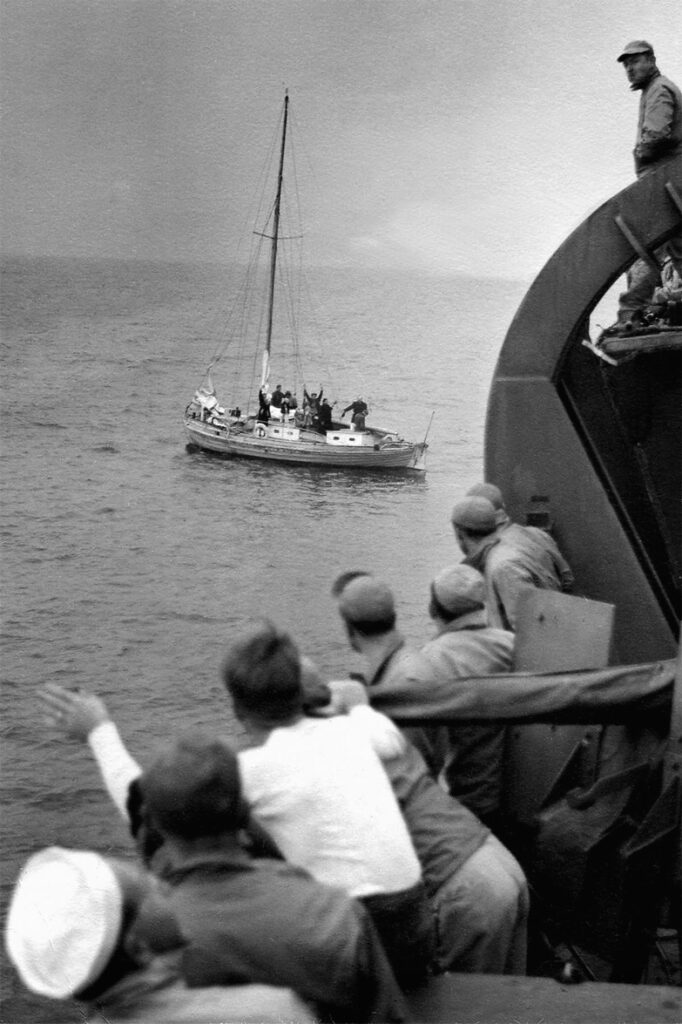Boats

Sixteen Estonians–7 men, 5 women, and 4 young girls–were crammed on board the tiny Erma.
Erma
On December 15, 1945, the Erma emerged from the icy North Atlantic in a snowstorm and approached the Naval Amphibious Base in Little Creek, Virginia. Crammed on board the 37-foot (11.2 meter) sloop were 16 Estonians: seven men, five women, and four young girls. The group had left Smedslatten, Sweden, on August 9, 1945, for what they called a short “coastal cruise”—to avoid scrutiny from Soviet spies. The “cruise” ended after a daring 128-day, 8,247-mile (13,272 kilometer) voyage across the ocean to America.
The Erma’s passengers mostly came from well-respected Estonian maritime families who had fled to Sweden during World War II. They feared that if Sweden buckled under Soviet pressure to send them back to Estonia they would be shot, imprisoned, or deported to Siberia.
Captain Harri Paalberg’s family was in particular danger because his father, Captain Rudolph Paalberg, had been at sea on the a/l Signe when the Soviets invaded Estonia in 1940. Estonian captains were ordered to turn in their ships to the communist authorities, but Paalberg instead sailed his boat to New York. When Soviet officials came on board to demand the boat, Paalberg grabbed one of the men and threw him overboard. He stayed in America and placed the Signe at the disposal of the U.S. Maritime Administration until the war ended.

Map of the Erma’s journey in Yachting magazine, March 1946.
From Sweden, the Erma sailed through the Göta Canal to Kragerö in Norway where it was repaired following damage in a bad storm. As the boat crossed the North Sea to Inverness, Scotland, it almost hit a naval mine, but then it traveled through the Caledonian Canal and headed to Ireland.
The boat stopped in Portaferry and Dublin before sailing south to the Madeira Islands west of Africa. From there the Erma caught the trade winds and headed west to America.
By late November, the passengers were very low on food and water and almost starving. They had sailed within 250 miles of the Florida coast, but storms pushed the boat eastward back into the Atlantic.

The Erma’s passengers were warmly welcomed by the residents of Portaferry, Northern Ireland.
On December 14, the USS John P. Gray, a U.S. Navy ship, spotted them and provided critical supplies of diesel, water, naval charts, food, and warm clothing.
A day later, the Erma reached the navy base. The passengers were taken to the officers’ mess, where they were examined by a doctor and granted six-month visas that were extended to allow them to stay in the United States. All became U.S. citizens.
The Erma may be the best-known “Viking ship” because passenger Voldemar Veedam and writer Carl B. Wall co-authored Sailing to Freedom, a 1952 bestseller translated into 30 languages. In 2018, a new edition was published to commemorate the 100th anniversary of the Estonian republic.

Children of the Erma: (from left) Aimi Küün, Juta Paalberg, and Ulla and Inga Küün.
Crew and passengers:
- Captain Harri Paalberg, wife Ellen, daughter Juta, 3, and his mother, Minna
- Arvid Küün, wife Nora, and daughters Aimi, 10, Inga, 7, and Ulla, 3
- Maia Andre and her mother Juliane Altenbrun
- Voldemar Veedam
- Paul and Lembit Reinholm
- Heino Luts
- Roman Ubakivi
Photographs reproduced with permission from the Estonian Maritime Museum.

The Erma arrived in Little Creek, Virginia, in a snowstorm.

Scale drawing of the Erma from Sailing to Freedom, the 1952 bestseller cowritten by passenger Voldemar Veedam.

Sailors on the USS John P. Gray waving farewell to the Erma. The U.S. Navy transport ship spotted the battered boat in the Atlantic just as its supplies were running out.

The Erma sailed through fierce storms on its journey to America. Painting by Werner Neudorff
Images reproduced with permission from the Estonian Maritime Museum.
